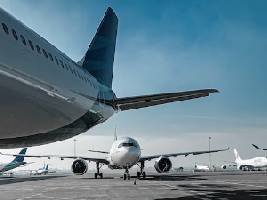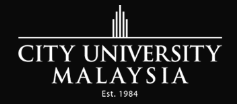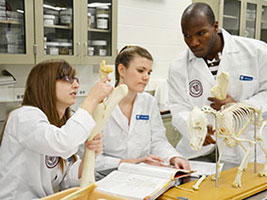So you wanna be a Pilot
by StudyMalaysia.com on February 10, 2016 | Career Guide
 Did you know...? KLM is the world's oldest airline, established in 1919, and Qantas the second-oldest (1920). Also, pilots and co-pilots are required to eat different meals in case of food poisoning. And, the maximum speed of a Boeing 747 is 955 km/h! If flying and excitement is take you to cloud nine and you're not intimidated by the responsibility, why not consider a career as a pilot?
Did you know...? KLM is the world's oldest airline, established in 1919, and Qantas the second-oldest (1920). Also, pilots and co-pilots are required to eat different meals in case of food poisoning. And, the maximum speed of a Boeing 747 is 955 km/h! If flying and excitement is take you to cloud nine and you're not intimidated by the responsibility, why not consider a career as a pilot?
The Job of a Pilot
A pilot's job is to fly and navigate airplanes, helicopters, and other aircraft. Their duties include checking the overall condition of the aircraft before and after every flight; communicate with air traffic control over the aircraft's radio system; operate and control aircraft along planned routes and during takeoffs and landings; and monitor engines, fuel consumption, and other aircraft systems during flight.
In general, there are four categories of pilots:
Airline pilots – commercial pilots who work primarily for airlines that transport passengers and cargo on a fixed schedule to destinations around the world.
Corporate pilots – pilots who fly for companies with their own fleet of planes to transport passengers such as company executives.
Commercial pilots – their job includes unscheduled flight activities, such as rescue operations, charter flights, firefighting, crop dusting, aerial photography, and aerial tours.
Flight instructors – commercial pilots who use simulators and dual-controlled aircraft to teach students how to fly.
Is this Job for You?
If you're considering a career as a pilot, you'll need to have good teamwork skills, good concentration and hand-to-eye coordination. You'll also need to be able to remain calm when dealing with challenging weather conditions.
The interest code for this career is RIE (Realistic, Investigative and Enterprising):
Realistic — Realistic occupations frequently involve work activities that include practical, hands-on problems and solutions. They often deal with plants, animals, and real-world materials like wood, tools, and machinery. Many of the occupations require working outside, and do not involve a lot of paperwork or working closely with others.
Investigative — Investigative occupations frequently involve working with ideas, and require an extensive amount of thinking. These occupations can involve searching for facts and figuring out problems mentally.
Enterprising — Enterprising occupations frequently involve starting up and carrying out projects. These occupations can involve leading people and making many decisions. Sometimes they require risk taking and often deal with business.
Work Styles
To become an airline pilot, you will need to be able to follow spoken instructions from air traffic control and give clear, confident instructions to crew members and passengers. Teamwork skills is important, as well as good written communication skills. You must be comfortable working with technology and be able to read maps and 3D displays. The ability to remain calm when dealing with challenging situations such as changing weather conditions, is imperative.
Work Values
Pilots value independence in working on their own. Support from the management is also important to them as well as recognition for a job well done.
Work Environment
Pilots flying across time zones need to cope with fatigue and jetlag. Flights can be long and flight decks are often sealed, so pilots must be able to work in small teams for long periods in close proximity to one another.
Working hours for pilots are strictly regulated for safety reasons but they would need to work non-standard hours including nights, weekends and public holidays.
Places of Employment
Pilots can find employment with passenger airlines, cargo airlines, commercial sectors (agriculture, broadcasting, tourism, medical and rescue, etc.), corporate companies, and flight schools. They can also work for the military or government.
Job Entry Requirement
Whether you want to fly a small aircraft during the weekends, or a Boeing 737 for a passenger airline, the process that leads to becoming a qualified pilot is like a step ladder. You start initially by becoming a private pilot, then a commercial pilot, and finally an airline transport pilot. Lastly, you have the option to become a commercial pilot.
Private Pilot License (PPL) — you can fly throughout Malaysia and carry non-paying passengers; you are not allowed to charge for your services.
Commercial Pilot License (CPL) or an Airline Transport Pilot License (ATPL) — you can work as a pilot commercially, fly large aircraft and earn an attractive salary.
To obtain a pilot's license, the candidate needs to pass a medical examination – class 2 for a PPL and class 1 for CPL.
Education and Training Qualifications
For more information, read this useful guide by Department of Civil Aviation Malaysia (DCMA) on 'How to Become a Pilot'.
Here are some names of aviation flying training organisations in Malaysia:
- Asia Pacific Flight Training
- HM Aerospace Sdn Bhd
- International Aero Training Academy (IAT)
- KIST Aviation Academy (KISTAA)
- Malaysia Flying Academy Sdn Bhd
What's life like as a pilot? Watch Nursyafiqah's story here.
Watch this! A montage of life as a student pilot at Asia Pacific Flight Training.
Sources of this article include:
- Aircraft Owners and Pilots Association, Career Options
- Department of Civil Aviation Malaysia, How to Be a Pilot
- My Next Move
- National Careers Service
- Occupational Outlook Handbook
Related Articles:
- Go Sky-High with a Career in Transport Service
- Transport Services
- Courses and Careers in Transport Services
- What are Aviation Careers?
You May Also Be Interested In...
�Hospitality and Tourism
![�Hospitality and Tourism - StudyMalaysia.com]() Hospitality and Tourism is a multidisciplinary field of study that pre...
Hospitality and Tourism is a multidisciplinary field of study that pre...How to Pick a Career Based on Your Personality
![How to Pick a Career Based on Your Personality - StudyMalaysia.com]() Finding the best career means you have to start with finding the right...
Finding the best career means you have to start with finding the right...How Much You Should Expect To Be Paid When You Graduate In Engineering
![How Much You Should Expect To Be Paid When You Graduate In Engineering - StudyMalaysia.com]() If you’ve just graduated or will be graduating soon, you might be wo...
If you’ve just graduated or will be graduating soon, you might be wo...Fields of Study: Business Management and Administration
![Fields of Study: Business Management and Administration - StudyMalaysia.com]() Business management involves planning, directing and operating the fun...
Business management involves planning, directing and operating the fun...Fields of Study: Science (Biological Science and Physical Science)
![Fields of Study: Science (Biological Science and Physical Science) - StudyMalaysia.com]() In this field, biological and physical sciences programmes have a gene...
In this field, biological and physical sciences programmes have a gene...�How Much You Should Expect To Be Paid When You Graduate In Accounting / Finance
![�How Much You Should Expect To Be Paid When You Graduate In Accounting / Finance - StudyMalaysia.com]() If you’ve just graduated or will be graduating soon, you might be wo...
If you’ve just graduated or will be graduating soon, you might be wo...






























